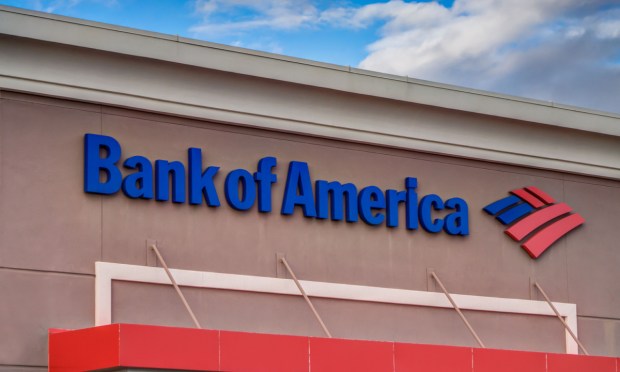BofA Expands SafeBalance as Consumers Struggle With Overdrafts

Bank of America is expanding the requirements of its SafeBalance checking account plan.
The account, introduced in 2014, lets customers manage their finances with no overdraft fees. Starting in November, the bank announced Wednesday (Sept. 13), accountholders who maintain a minimum daily balance of $500 or more will have a $4.95 monthly fee waived.
In addition, the bank will begin waiving the fee on accounts for any owners under 25, regardless of their balance. Before now, accountholders had to be enrolled in school to qualify for the waiver.
According to the release, SafeBalance recently surpassed 5 million accounts, with the program now making up more than 50% of new checking account openings, with the total number of accounts having grown by more than 35% over the past year.
“This milestone reflects our commitment to providing simple and transparent solutions to our clients at every stage of their financial journey, and to helping them achieve financial wellness,” Bank of America Head of Consumer and Small Business Products Mary Hines Droesch said in the announcement.
The news comes at a time when 20% of consumers report they’ve overdrawn their accounts in the past year “as they grapple with the demands of inflation, of timing cash flows with their monthly bills and everyday spend,” PYMNTS wrote last week.
Meanwhile, PYMNTS intelligence finds consumers who live paycheck to paycheck are six times more likely to use overdrafts, with 39% of these consumers experiencing transaction declines and overdrafts, compared to 6.3% of those not living paycheck to paycheck.
“Millennials and the credit marginalized — consumers who experienced at least one credit rejection in the past year — were also especially likely to have attempted transactions without sufficient funds,” the report said.
And overdraft fees add even more weight to consumers’ financial woes, with the research showing that 62% of consumers who attempted a transaction without sufficient funds incurred some type of overdraft fee: 45% of consumers incurred a flat fee, and 27% incurred a fee equal to a percentage of the transaction.
“However, some consumers incurred a combination of a fixed fee and a percentage charge,” the report said. “The average flat fee consumers faced was $29, and the average percentage charge was 2.9% of the transaction.”
Banks such as Citi and Bank of America have shied away from overdrafts as a revenue source, while lenders like Truist have introduced account structures as a buffer against overspending.
